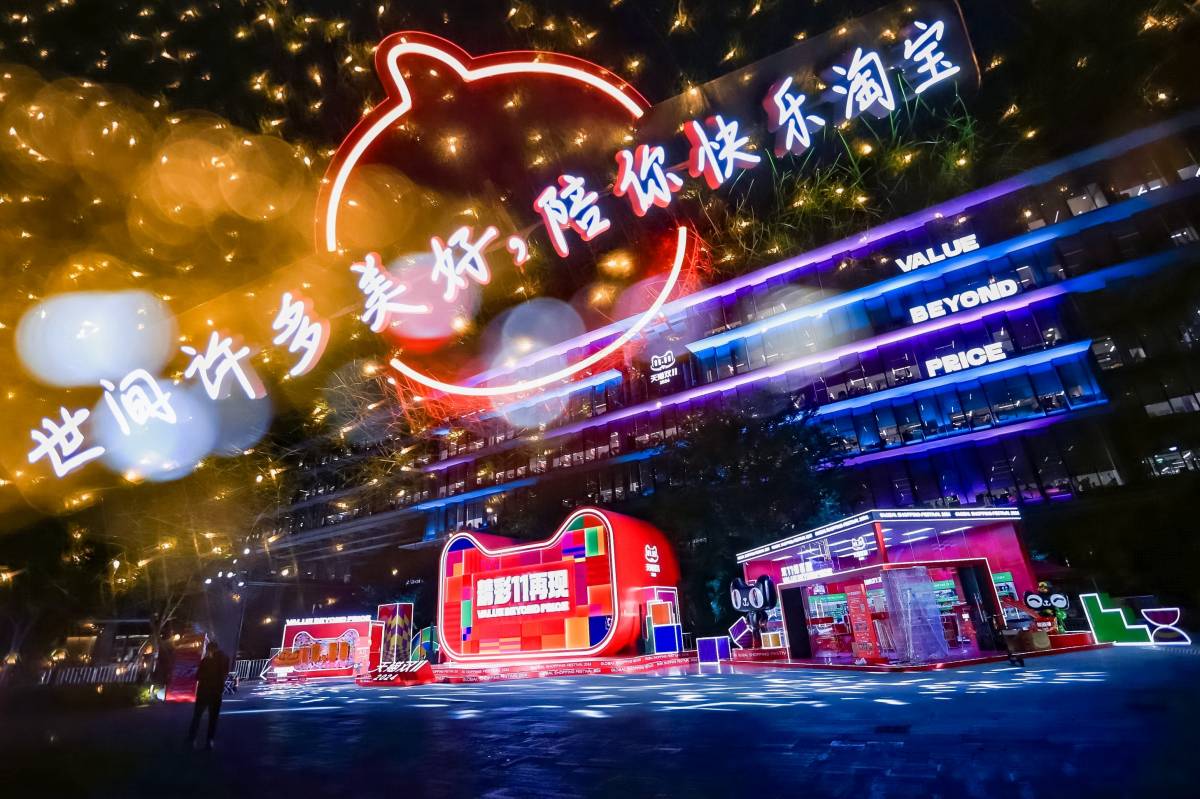
Moschino is known for its playful, innovative and irreverent style. Whether it’s sending miniature puppets down the fashion-week runway, instead of human models, or creating clothing lines inspired by iconic food and beverage brands – the Italian fashion house isn’t afraid to experiment.
That penchant for boundary-pushing has helped boost Moschino’s presence in China, where it has amassed a strong following among tech-savvy consumers. Today, its new product releases primarily take place online on Tmall Luxury Pavilion, Alibaba Group’s dedicated platform for luxury and designer labels. The brand was also among the first to pilot Alibaba’s new e-commerce destination aimed at younger, more value-conscious shoppers, Luxury Soho, since launching last year.
We sat down (over Zoom) with Stefano Secchi, Managing Director at Moschino, to talk about the company’s digital transformation, China’s rapidly evolving fashion landscape and what other innovations the brand has in store for 2021.
This interview has been edited for length and clarity.

2020 was a tough year for the global luxury industry. Has working with Tmall Luxury Pavilion helped Moschino overcome the challenges brought by the pandemic?
Our business on Tmall Luxury Pavilion grew 80% last year, compared to 2019. This significant jump in sales helped us balance less-strong performances registered in other countries. It was a boost of oxygen. The collaboration also enhanced our brand visibility and knowledge acquisition in China. It gave us a stronger understanding of the client’s journey and experience in e-commerce environments and their feedback on our collections.
What is your outlook on consumption in China, as we continue to see the luxury sector rebounding?
Unfortunately, some cities in China have recently gone under full or partial lockdown, so the situation has been constantly changing. But I believe that China will remain a key market for luxury and further grow in importance, but there will be a reshuffle of parameters: For instance, domestic traveling is emerging strongly, so we’re seeing destinations where travel retail and duty-free are available – such as Hainan Province – become more relevant. While we’ve seen a change in formats, the market has maintained its speed of growth. My outlook on the market remains extremely positive.
How has Moschino embraced digitization and innovation in the past year?
In 2020, the biggest challenge we faced was to digitize and change our formats. Moschino was among the first few brands to launch a virtual showroom – we innovated strongly to create such tool – then we took our show fully digital again for our 2021 spring-summer show. In some of our stores worldwide, we implemented augmented-reality experiences for our clients. They can book an appointment to use smart glasses to virtually browse the store in 3D and consult sales assistants in real time from their homes. In China, specifically, we’ve also been launching capsule collections digitally on Tmall Luxury Pavilion and recently kicked off a campaign for the Chinese New Year, where we experimented with gamified experiences for the very first time.
Tell us more about your partnership with Tmall Luxury Pavilion.
As soon as we heard about Alibaba’s plans to open a luxury compartment within its ecosystem, I think all brands looked at it with great interest. That was also the case for Moschino. First of all, China is a key strategic market for luxury. We would also be partnering with the top, unparalleled player in the industry and can rely on the strength, financial capacity, insights and technology of Alibaba – all these factors made us very confident in and comfortable with the collaboration.
What are your next steps in the collaboration?
This year, we plan to release more novelties exclusively on Tmall. This includes launching our jewelry collection for the first time. Also, we have in the works products and capsules that will be available only on Tmall Luxury Pavilion and nowhere else in the world. We also want to keep on improving the omnichannel experience for clients to gradually reduce the distance between online and offline and connect the entire customer journey.

Did you learn anything new or interesting about Chinese consumers?
Chinese consumers are very brand-savvy and fully informed about the latest emerging trends in the luxury world. They can be more extreme in terms of fastness: consumer behaviors and expectations shift quickly, so brands need to be very fast and accurate to grab their attention. They are younger – about 10 years younger than our customers in Europe or the U.S, if not more. Our clients in China also tend to be more digital and innovative, which are key ingredients of Moschino’s DNA.
In a way, this demographic matches our brand perfectly, especially since the arrival of Jeremy Scott who became the Creative Director of Moschino in 2013. Jeremy was one of the first designers to understand that the world was heading towards the direction of streetwear and casualwear. He headed a radical change in Moschino’s brand positioning and target audience, towards a much younger client base.
Did that change the way Moschino communicates with consumers?
It has completely changed our strategy. In the past, luxury brands typically produced the same content and tried to adapt them to different channels. Today, it’s vice-versa, in a sense that the technologies and communication channels dictate our ideas and storytelling from the beginning. That is an interesting development in today’s digitized environment, and all the more in China. China has been an incubator of new trends and new digital tools for communication.
So a greater emphasis on storytelling.
Yes, definitely so. Storytelling is fundamental. Most of the time, it is much more important than the product itself or the pricing. It’s the starting point. It is what makes a brand and its products different, valuable or relevant. It’s telling stories to not just clients, but also your partners and internal stakeholders.
Can you share what the digital transformation journey has been like for Moschino? Just a few years ago, most high-end brands still viewed e-commerce and digital with caution. The industry has obviously changed a lot since then.
Luxury fashion brands were initially reluctant to go online for various reasons. There were concerns about pricing and brand equity, such as how people’s perceptions might change when they see a luxury product sold online. They might not have been ready to properly present a brand online, not just as a shop window, but also in terms of satisfying clients’ needs and return requests. Then many brands decided to go online as a first step. Initially, I think it was seen purely as a commercial opportunity to increase revenues.
We are now leaving for the second phase: clearly understanding the pros and cons, where we want to be exposed and positioned and what makes the most sense without compromising brand equity. Everyone is now rationalizing. That’s the case at Moschino as well. We try to use our e-commerce presence to improve brand equity and lead to better, broader and more-valuable dialogues with consumers.
In the past, you could decide if you wanted to be on e-commerce. Nowadays, only a few brands can afford not to be. The question’s no longer whether we need to be online, but how to do it best.
Sign up for our newsletter to receive the latest Alibaba updates in your inbox every week.




